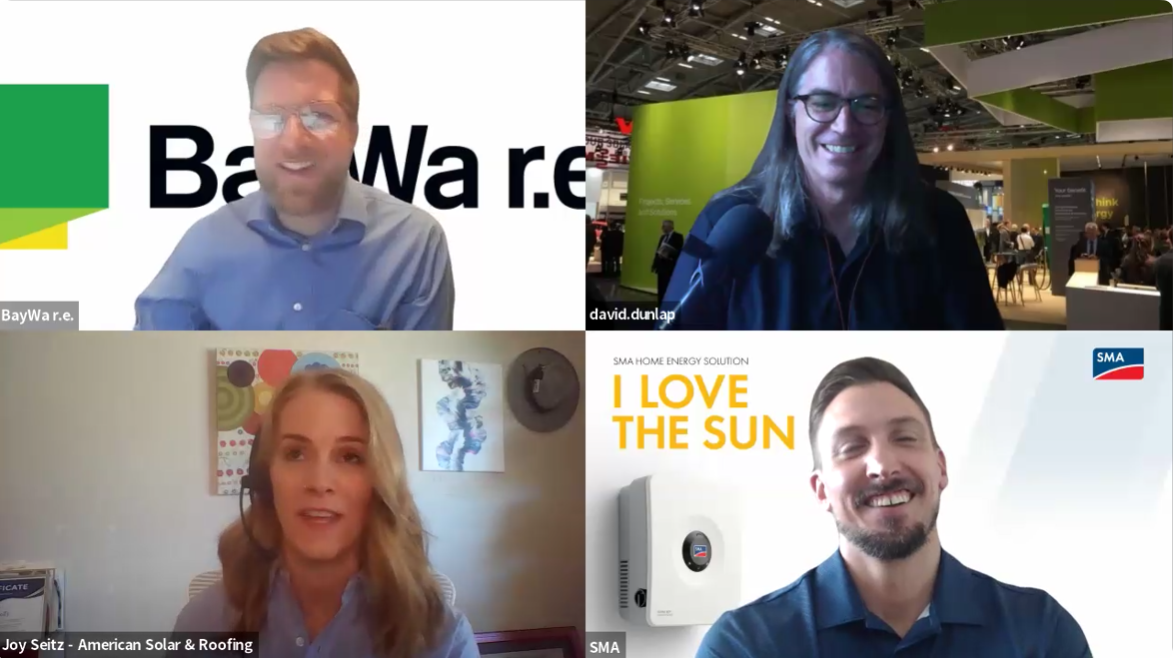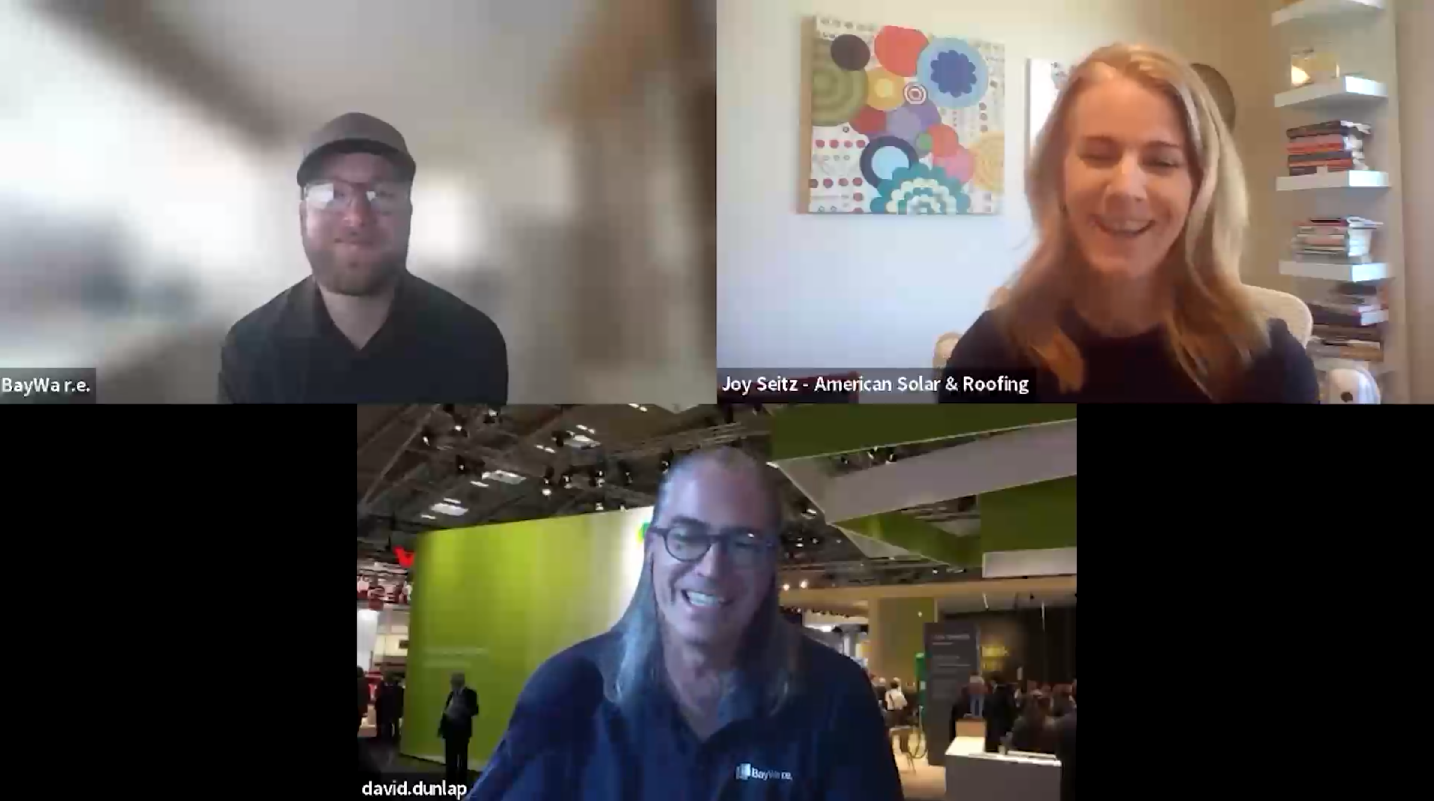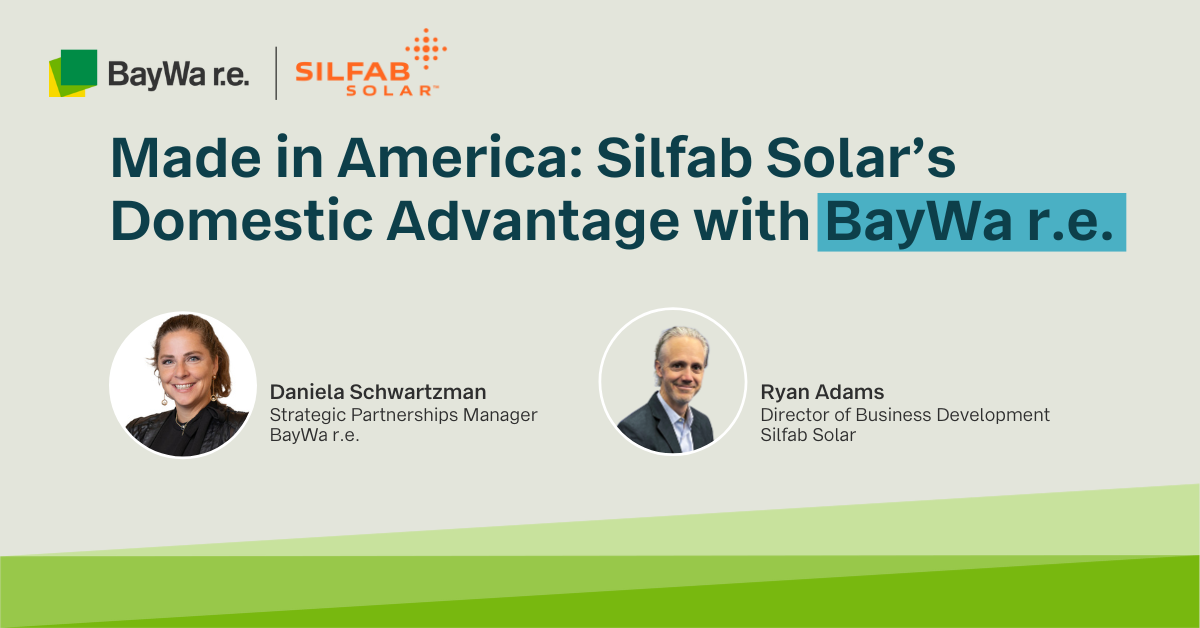
A Mainstream Tipping Point?
Two thoughts from Daniel Mario
1. The residential segment has been stronger than anyone expected in 2019
One of the major take-aways from 2019 is the surprising strength of the residential segment, starting with a surge in demand nationally in early Q2 that never let up. The looming ITC reduction certainly played a role as installer sales and marketing organizations leveraged the change to drive sales, but this was only part of the story.
Growth in 2019 will likely be 25%+ year-over-year versus the low double-digit growth rate posited by analysts when we entered 2019. No manufacturers or distributors forecast this strong of a 2019 for the residential segment. Indeed, most installers have been surprised by their own growth rates.

Daniel Marino
CCO, Baywa r.e. Solar Systems
Anecdotally, it is rare that I have a conversation with an installer that describes growth less than 25% this year and we are seeing some large installers grow at rates exceeding 40%. If anything, labor shortages, and product availability are often cited as factors holding installers back from even higher growth rates.
Who is growing?
Growth in 2019 has been led by small to super-regional installers, but most of the national players are also on a healthy growth trajectory (albeit at a slower rate than the long tail).
What is driving this growth?
Consumer support for solar is now broad for reasons ranging from environmental to security and grid stability concerns and many more consumers are comfortable with solar as a technology. Financially, residential solar makes sense for many consumers and the market has a wide array of loan and lease providers competing for consumers.
And it’s not just a few states driving this change: rather, we are seeing growth across almost every geography in the USA, with regions like the Midwest and southeast starting to boom. Trends like the new homes solar mandate in California, rapidly improving module efficiency, and the rapid rise of energy storage will continue to drive this growth. Customer acquisition costs will also likely decline as consumer awareness and support for residential solar mainstreams.
We may be witnessing a mainstream tipping point for the residential segment and 2019 is likely the year it started.
2. The speed of change is increasing
2019 felt like a year of faster than normal changes in the solar industry (and we have a history of fast change). Policy and trade related ‘surprises’ brought sudden uncertainty to global supply chains manifesting in price changes, product constraints, and increased lead-times across many vendor/product lines. Most price changes were up (e.g. inverters manufactured in China) but some went down, albeit temporarily (e.g. bifacial modules).
Product innovation also seemed to speed up, with all the positives (e.g. higher efficiency) and negatives (e.g. difficult to plan for rapid product changes) that entails. On the module side, Mono Perc pushed poly out of the market (in large part) and we saw a broader introduction of split cell technology to the market, the rapid scaling of bifacial modules (largely in the commercial and utility segments), form factor changes, and an overall faster ramp in module efficiencies than we’ve seen historically. Looking ahead, we’ll see module efficiencies continue to increase at a faster than historical rate and prices continue their downward march when southeast Asia production starts ramping up.
Product roadmaps across modules, inverters, storage and racking products are likely to change faster than ever looking forward into 2020.
Opportunity is rapidly increasing for storage (albeit unevenly across many states), with interest skyrocketing at the consumer level and end users increasingly demanding that storage be part of the conversation (whether or not they end up purchasing storage products). While a huge opportunity, it will also entail new technical know-how and a more sophisticated sales process.
Ultimately, innovations like energy storage will help drive down customer acquisition costs for installers while increasing average revenue per home. As we enter the era of convergence with smart homes, electric cars, etc, storage is just the beginning of the story. Installers will have significant opportunity if they manage and adapt to the change and they will have risk of declining relevance if they do not. Given the pace of change, this learning and adapting will have to happen faster than ever before.
An End To The Solar Coaster?
David Dunlap on a (potentially) smoother road ahead
At the end of 2018, it was a challenge to weigh the numerous tailwinds of opportunity against the equal or greater variety of headwind challenges or unknowns. And in prior years, we always feared that one policy change, or one lawsuit, or a new President with an unfriendly agenda, each could possibly kill the industry in one move. But now, looking back over 2019, I believe we passed (or maybe proved that we have already passed) a tipping point of sorts in solar viability across most if not all major segments.
We have seen unsubsidized utility-scale PV developments are now cheaper than coal. Many prospective homeowners are realizing that instead of just considering a solar option, they can ask “May I have storage with that?” Many of the top product manufacturers saw unprecedented growth in the US this year and have been scrambling to adjust and diversify their supply chains to keep up with the demand.

David Dunlap
VP of Operations, BayWa r.e. Solar Systems
Despite Federal leadership that still supports fossil fuels over renewables, most states are moving ahead with their own renewable portfolio standards and programs that support electricity generation from carbon-free sources. Despite 30% import tariffs on many solar products, residential & commercial installations are increasing faster than analysts predicted.
Many policy and industry challenges still exist, and new ones will undoubtedly appear, but they are no longer of the singular magnitude that we fear our entire industry will implode, and that is a real sign of growth and maturity.
What felt just a few years ago as a major crisis that everyone sought to hedge against, is now a “manageable” risk to plan around, and may only impact our planning time or process, rather than potentially cause us to seek a whole new industry in which to work.
While we are still in the early part of the curve in terms of actual solar deployment against our energy consumption, it is growing at a broad enough and deep enough rate that we can take the policy or supply chain punches without swerving off course or losing our momentum.
Now is the time to grow up our planning processes, build deeper and more meaningful partnerships that support long term healthy businesses. It is still a solar coaster for sure, but the peaks and valleys should start to diminish in relative scale and allow us all to change gears and drive into a more robust and stable future.




